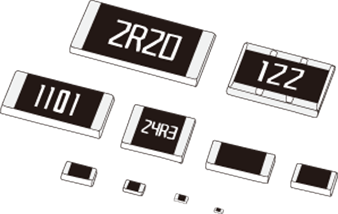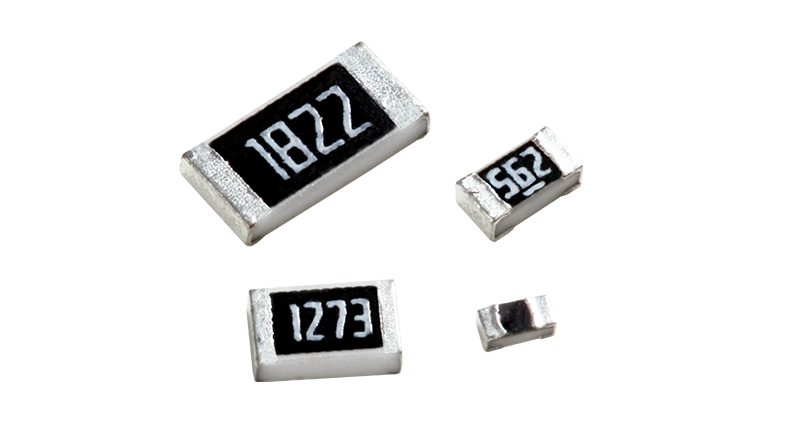We often encounter how to choose surface mount resistors when selecting products, because different materials have different characteristics. In addition to the differences in materials and characteristics, many factors such as delivery time and price need to be considered. Below, we will explain the advantages and disadvantages of metal foil resistors, metal film resistors, thin film resistors, and thick film resistors, so that the selection of surface mount resistors is not confused.

Thick film surface mount resistors have the following characteristics:
advantage:
High precision: It can achieve relatively accurate resistance values, with common precision levels of 1%, 5%, etc.
Good stability: The resistance value changes relatively little under environmental changes such as temperature and humidity, and the reliability is high.
Strong power tolerance: able to handle a certain amount of power, suitable for scenarios with certain power requirements in various circuits.
Small size and light weight: Suitable for high-density surface mount technology (SMT), it can save space in circuit design and facilitate product miniaturization and integration.
Mature production process: easy to mass produce, relatively low cost.
Disadvantage: Compared to some special types of resistors, their high-frequency characteristics may be relatively weaker. Overall, thick film surface mount resistors are widely used in electronic circuits and have many advantages.
Thin film patch resistors have the following characteristics:
advantage:
High precision: The precision level is usually high, reaching high-precision levels such as 0.01% and 0.05%, which can provide very accurate and stable resistance values.
Good temperature stability: The drift of resistance value is small when the temperature changes, and the long-term stability is excellent.
Excellent high-frequency characteristics: suitable for working in high-frequency circuits, with good performance in transmitting and processing high-frequency signals, and can reduce problems such as signal distortion.
Strong power tolerance: able to work reliably within a certain power range.
Small size and light weight: conducive to miniaturization and high-density layout of circuits.
Disadvantage: Relatively speaking, the cost of thin-film surface mount resistors may be slightly higher than some ordinary types of resistors. But overall, due to its many excellent characteristics, it is widely used in circuits that require high resistance performance such as high precision and high frequency.
Metal film patch resistors have the following characteristics:
advantage:
High precision: usually with good precision, common precision levels include 1%, 0.5%, 0.1%, etc., which can provide more accurate resistance values.
Good temperature stability: The resistance value changes relatively little within a certain temperature range, indicating good stability.
Good high-frequency performance: able to handle signal transmission and processing in high-frequency circuits well, without easily causing signal distortion and other problems.
Strong power tolerance: able to work reliably within a certain power range.
Long term high reliability: It has good durability and reliability.
Wide range of resistance values: able to cover a variety of different resistance value requirements.
Disadvantage: Relatively speaking, the cost may be slightly higher than some ordinary types of resistors. But overall, metal film patch resistors have been widely used in many electronic circuits due to their excellent performance.
Metal foil patch resistors have the following characteristics:
advantage:
Very high precision: The precision level can usually reach very high levels, such as 0.001%, 0.01%, etc., which can provide extremely accurate and stable resistance values.
Excellent temperature stability: The drift of resistance value is extremely small during temperature changes, and the long-term stability is outstanding.
Low noise: Strong ability to suppress noise interference in the circuit, providing a relatively pure signal transmission environment.
Strong power carrying capacity: It can work reliably within a certain power range and is not easily damaged.
Fast response speed: able to quickly respond to changes in resistance values in rapidly changing circuits.
Disadvantages: Relatively speaking, the cost may be relatively high, and it is more commonly used in high-end circuits that require high accuracy and performance but are not very cost sensitive.


